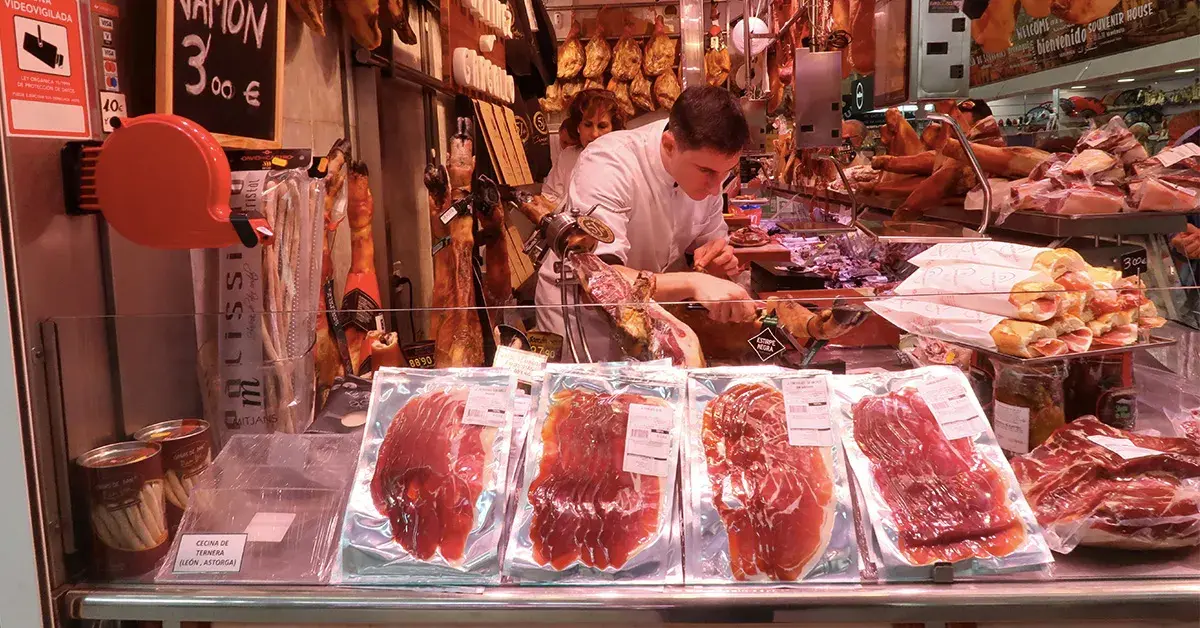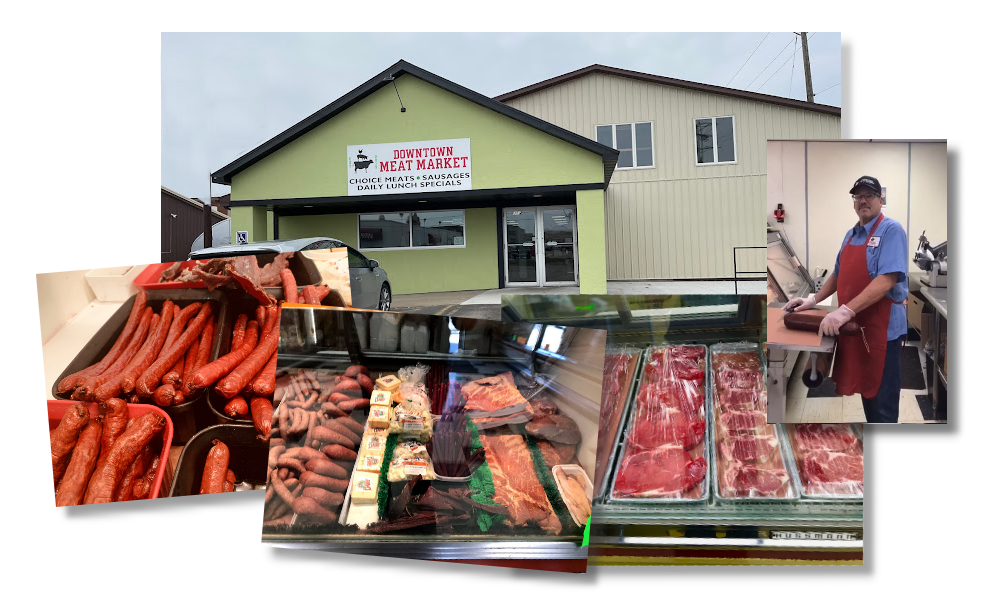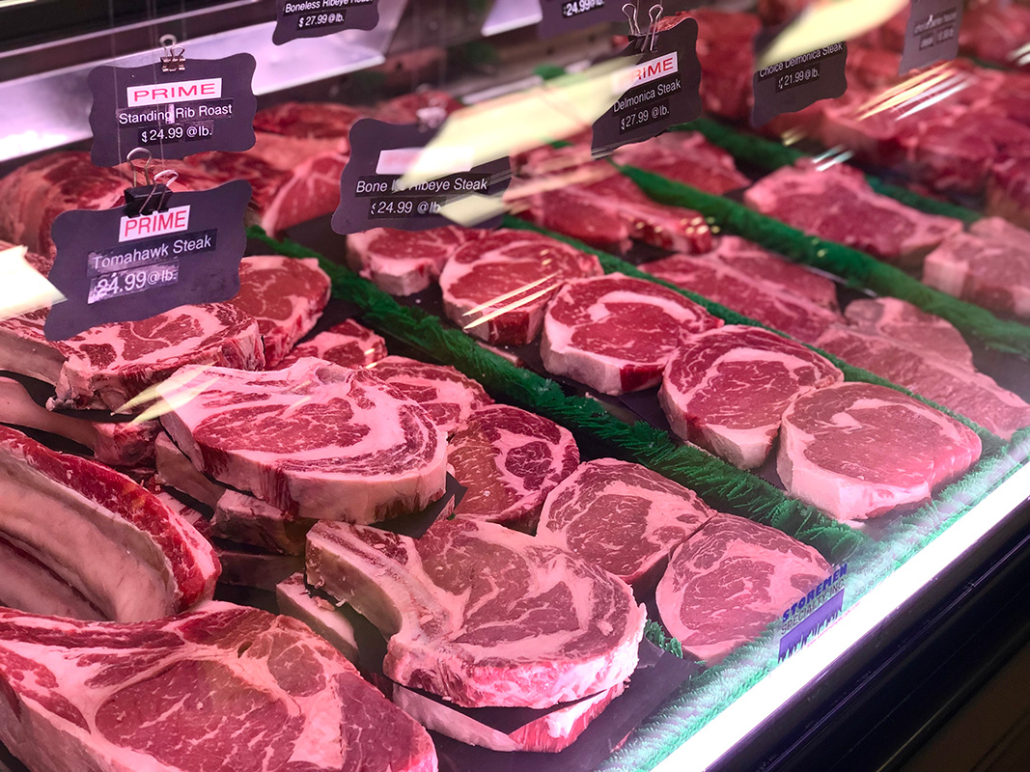Check Out the Local Flavor at Bagley Farms Meat Market Edwardsville IL: Fresh and Delicious
Check Out the Local Flavor at Bagley Farms Meat Market Edwardsville IL: Fresh and Delicious
Blog Article
Reveal the Art of the Butcher's Cut in a Modern Meat Market
In the ever-evolving landscape of modern meat markets, the butcher's cut has actually transcended its typical origins, merging old-time craftsmanship with modern practices. What absolutely establishes the modern-day butcher apart is their capacity to forge a much deeper connection in between consumers and the beginnings of their meat.
Evolution of Butchery Strategies

The mid-20th century saw butchery methods further refined by scientific understandings into muscular tissue biology and meat aging, enhancing both tenderness and preference. Developments like vacuum cleaner packaging and refrigeration prolonged product shelf-life, enabling butchers to expand offerings and boost quality control. This duration also noted the rise of specialized tools, such as band saws and meat slicers, which raised precision and performance in meat processing.
The 21st century has actually introduced electronic modern technology into the butchery world. Electronic systems currently assist in monitoring pet provenance and maximizing cuts to satisfy particular client preferences. Furthermore, a rebirth in artisanal butchery has emerged, mixing typical skills with contemporary knowledge to accommodate consumers looking for ethical and sustainable meat options. This evolution emphasizes a dynamic interplay between practice and advancement, meeting modern demands while preserving the craft's heritage.

Comprehending Meat Cuts

Comprehending the details of meat cuts is vital for both butchers and customers looking for high quality and value. For butchers, accurate cuts mirror skill and regard for the craft, guaranteeing marginal waste and ideal yield.
The main classifications of meat cuts consist of primitive, sub-primal, and retail cuts. Primal cuts, such as the loin, rib, and chuck, are the big sections initially divided from the carcass. Butchers after that damage these down additionally into sub-primal cuts, prior to ultimately generating retail cuts readily available to customers, like ribeye or tenderloin. Each stage calls for careful interest to physiological framework and muscle mass make-up.
Recognizing muscular tissue structure is important; muscular tissues used extra often by the animal often tend to be tougher and are best fit for slow-moving cooking methods, while less-used muscles, like those found in the loin, are extra tender and suitable for barbecuing or roasting. Knowledge with these distinctions encourages customers to make informed selections, improving their cooking ventures.
Selecting High Quality Meat
Picking the best meat entails more than simply choosing continue reading this a visually enticing piece from the screen. The art of choosing high quality meat calls for a critical eye and knowledge of specific attributes that represent quality and excellence.
Second of all, take into consideration the marbling, which describes the white flecks of fat within the muscle. Appropriate marbling is a key sign of inflammation and taste, as it melts throughout cooking, improving the meat's juiciness. Remember, greater marbling commonly associates with exceptional high quality cuts, such as USDA Prime.
Structure is an additional crucial element; meat must really feel strong to the touch, not slimed or overly soft. In addition, bear in mind the aroma. Fresh meat must have a tidy, neutral odor, devoid of any kind of sour or repulsive odors.
Matching Cuts With Cooking Methods
Successfully combining cuts of meat with the proper food preparation techniques is necessary for achieving ideal taste and appearance. Various cuts differ in inflammation, marbling, and connective cells web content, each needing details strategies to open their potential. For example, tender cuts like filet mignon and ribeye, with their inherent marbling, benefit from high-heat, quick-cooking methods such as cooking or pan-searing. These techniques boost the click to read more meat's natural tastes and ensure a juicy coating.
Alternatively, harder cuts like brisket and chuck roast are rich in collagen, which breaks down right into jelly when cooked slowly. These cuts are perfect for braising or sluggish roasting, permitting the meat to soften gradually and establish deep, complicated flavors. Cuts such as short ribs and pork shoulder make out well with slow-cooking techniques, where expanded cooking times change their robust textures right into succulent recipes.
Lamb shanks and oxtail, which call for extended cooking to tenderize, are perfect prospects for cooking or sluggish simmering. These approaches coax out rich, hearty tastes while maintaining wetness. By comprehending the special features of each cut, chefs and home cooks alike can elevate their culinary developments, ensuring each meal is both pleasing and unforgettable.
The Butcher's Duty Today
Browsing the evolving landscape of the contemporary meat market, the butcher's role today prolongs past simple preparation of cuts. Contemporary butchers are culinary craftsmens, educators, and supporters for sustainable practices. They link the space between the ranch and the fork by making certain ethical sourcing, understanding animal husbandry, and prioritizing openness in the supply chain. This shift mirrors the growing customer demand for high quality over quantity, where provenance and animal well-being pop over here are paramount.
Along with crafting exact cuts, butchers currently involve directly with customers, providing cooking advice and tailoring selections to match individual demands and preferences. Their expertise in meat aging, marbling, and flavor profiles equips consumers to make educated decisions, enhancing their cooking experiences. This personalized service exemplifies the butcher's developing function as a trusted expert in the kitchen.
In addition, butchers are critical in minimizing waste, utilizing entire animals to develop diverse products such as sausages and supplies - bagley farms meat market edwardsville il. This thorough strategy not only respects the pet but also straightens with contemporary sustainability goals. By doing this, the modern-day butcher personifies both custom and innovation, adapting to an ever-changing market while preserving the creativity and honesty of their craft

Verdict
Proficiency in understanding diverse meat cuts and high quality indicators equips butchers to give informed referrals, aligning details cuts with optimum cooking techniques. By honoring historic practices while accepting modern needs, the butcher's role remains important in today's sophisticated meat market.
Report this page